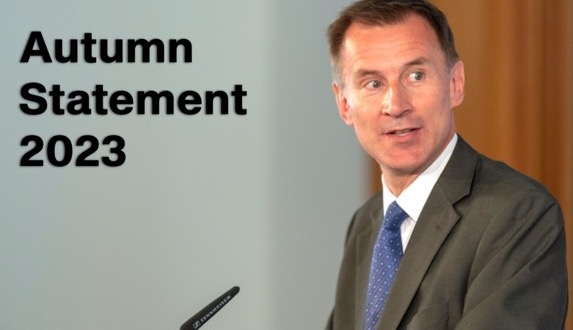
Autumn Statement: 'Pension pot for life' unveiled

Chancellor Jeremy Hunt launched a consultation on giving people one 'pension pot for life' as part of his Autumn Statement 'mini-Budget' today.
He said pension pot for life reforms would give savers a, “legal right to require a new employer to pay pension contributions into their existing pension.”
The reforms would give workers the right to nominate the pension scheme they want their employer to pay into, which the consultation claims could help solve the problem of lost pension pots as workers move jobs.
The proposals would potentially require businesses to link up with dozens of different providers.
The Chancellor said the reforms could help unlock an “extra £1,000 a year in retirement for an average earner” that had been saving for retirement from the age of 18.
Claire Trott, divisional director of retirement and holistic planning at wealth manager St. James’s Place, said the administrative burden for employers could be prohibitive.
She said: “The call for evidence on the proposed “pot for life” is a very interesting concept and could be a real benefit to those that want to move jobs and keep all their benefits in one place, as well as those who already have substantial funds and want to ensure they don’t have to sweep their savings into one pot on a regular basis.
“However, the administrative burden of paying pension contributions to a variety of different providers for your workforce is likely to be a headache that employers don’t need.
“It also remains to be seen how this could work with the Auto Enrolment regulations currently in force. It is safe to say that time and care should be taken to consider all the options, pros and cons of such a scheme where we already have such great uptake in savings since the introduction of Auto Enrolment.”
Jon Greer, head of retirement policy at Quilter, said the pot for life reforms have reforms due to a lack of engagement from workplace pension savers.
He said: “Though this proposal sounds positive on the surface and will be useful for those members who are keen to take ownership, it has flaws. The ‘pot for life’ would likely take a long time to gain traction, not least because the majority of workplace pension savers are largely disengaged. They simply trust that their employer gets on with setting up their pension through the auto enrolment process and they therefore may not be keen to engage with a system that requires them to play a more active role.
“The success of auto-enrolment has been built on inertia. While new data shows 88% of eligible employees participated in a workplace pension in 2022, there is scant evidence that people will engage to the point of making an active choice to stay in a scheme or choose a particular scheme in the first instance. The engagement required may have no basis in reality unless the pot moving with a scheme member is the default, and this would require a total overhaul of the current system which doesn’t appear to be part of the plans.
“In addition, to gain traction this ‘pot for life’ proposal would likely have to follow the Australian model whereby the active pot is the member’s pot for life unless they actively choose an alternative provider. It is also unclear whether members would make logical decisions, particularly as we could expect to see workplace pension providers advertising to a member directly to join their scheme.
“A key concern raised earlier in the year during the original consultation was that businesses may be reticent to adopt this system as it could put additional administration burden on them. However, the legal requirement to facilitate a ‘pot for life’ will mean employers must support their employees looking to take ownership. The current auto-enrolment system is predicated by slick payroll systems, and engagement, time and investment will be required to adjust to this change.
“It is positive that the government is paying closer attention to pensions savings and that it is implementing changes such as the ‘pot for life’, but it is important it doesn’t let its other pensions commitments fall by the wayside. Pensions dashboards have been repeatedly kicked down the road but remains incredibly important to help people locate the £27bn currently held in ‘lost’ pension pots. When, or if, the ‘pot for life’ proposal comes to fruition, savers will still have multiple pension pots to keep track of so this must not be forgotten.”
Jamie Jenkins, director of policy at retirement provider Royal London, also had reservations about the potential reforms.
He said: “Allowing members to choose their own pension scheme sounds like a great idea but, in practice, workplace pensions already offer more investment choice than most people need. And they are highly regulated with capped charges, whereas this change could lead to a pensions system dominated by prolific marketing, higher charges, and ultimately some higher risk pension schemes.
“Automatic enrolment into workplace pensions has been a huge success story and the relationship between employers and their employees is pivotal to this. A ‘pot for life’ model would significantly undermine this dynamic by requiring employers to navigate an increasingly complex array of payments to different providers. Ultimately, it may disenfranchise the very group of people we’ve relied upon to deliver the successful rollout of automatic enrolment.
“If we really want to engage future generations in their retirement savings and address the proliferation of small pension pots, we should focus on a digital solution by delivering a fully functional pensions dashboard.”
